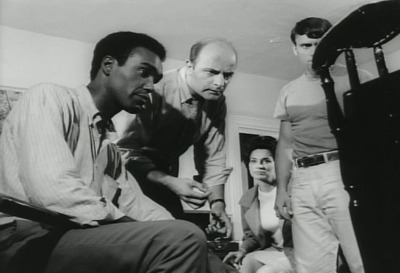This is a small research project I did for my MA. It was my lowest mark on the course and I totally tried to do more than was feasible. I will address the limitations below.

Teaching strategies
An approach to using strategies in listening isn’t new, although there is more to it than the advice given to new TOEIC teachers of “Get them to predict based on what they hear and then think about the gist.” What interested me was whether the strategy chains that learners build up, according to Rebecca Oxford (2011) could be instructed.
I put together a class at the local community hall for 6 weeks, with 7 women. The first class let me see the strategies that the learners were already using and give a questionnaire (the MALQ by Vandergrift et al., 2006). The last class involved no instruction of the strategy chain but allowed me to see whether it was being used. Most used a few simple strategies. I derived a chain of potentially useful strategies based upon learners’ answers to the MALQ. The class was a massive mix of levels, from A1 to B2 on the CEFR. I used a mix of authentic texts (reality television) and inauthentic texts (from elllo.org). First I used one text to teach the strategy chain. Learners listened twice and transcribed what they understood from the text in English or Japanese. They wrote what strategies they used in English or Japanese.
The chain
I derived the following chain for instruction: schema activation (through focused thought or speaking to other learners about the topic), plan how to listen based upon their schema activation, relax in order to reduce cognitive load issues and regain focus when attention has been lost. The reasons for this particular chain was that the learners reported little use of these strategies in their listening yet I believed that the learners would benefit from them, particularly the relaxing and refocusing.
So, what happened?
Well, all the learners went along happily with the teaching and said they used the strategy chain in weeks 2-5. In week 6, the assessment week, not a single learner reported use of the chain.
Now, this is not the end of the world. It showed me that teaching is just teaching. Whether learners decide to do something in a classroom is another thing entirely. You cannot force a way of working onto someone. It also comes down to comfort and experience. For some of the learners, they were quite proficient in communication but claimed to be uncomfortable with listening. I used schema activation in the chain and perhaps this was something that they did unconsciously. For the lower-proficiency learners, perhaps the relaxing and refocusing needed more time to be practiced effectively. Whatever the case, strategies are used, in tandem with one another, but perhaps rely more upon learner evaluation of the strategies’ value in combination than teacher evaluation.
Another aspect of the course was that it was 6 weeks which was all the time fast was feasible for me after handing out leaflets on the street and asking friends to share on Facebook (when I was on there). Potentially, with a longer course it might have resulted in learners using this chain in the assessment week. It might not have, and I am going to say that it appears unlikely. Still, it’s good to know what is unlikely to work, isn’t it?
In all likelihood it appears that teaching strategies helps learners, but the chain of strategies used depends entirely on the individual learner. It might be useful to carry out the MALQ in class, see what isn’t being used and teaching successful use of particular strategies.
References
Oxford, R (2011) Teaching and Researching Language Learning Strategies. London: Routledge.
Vandergrift, L, Goh, CCM, Mareschal, CJ, & Tafaghodtari, MH (2006) “The Metacognitive Awareness Listening Questionnaire: Development and Validation” Language Learning 56:3 September 2006, pages 431-462.
